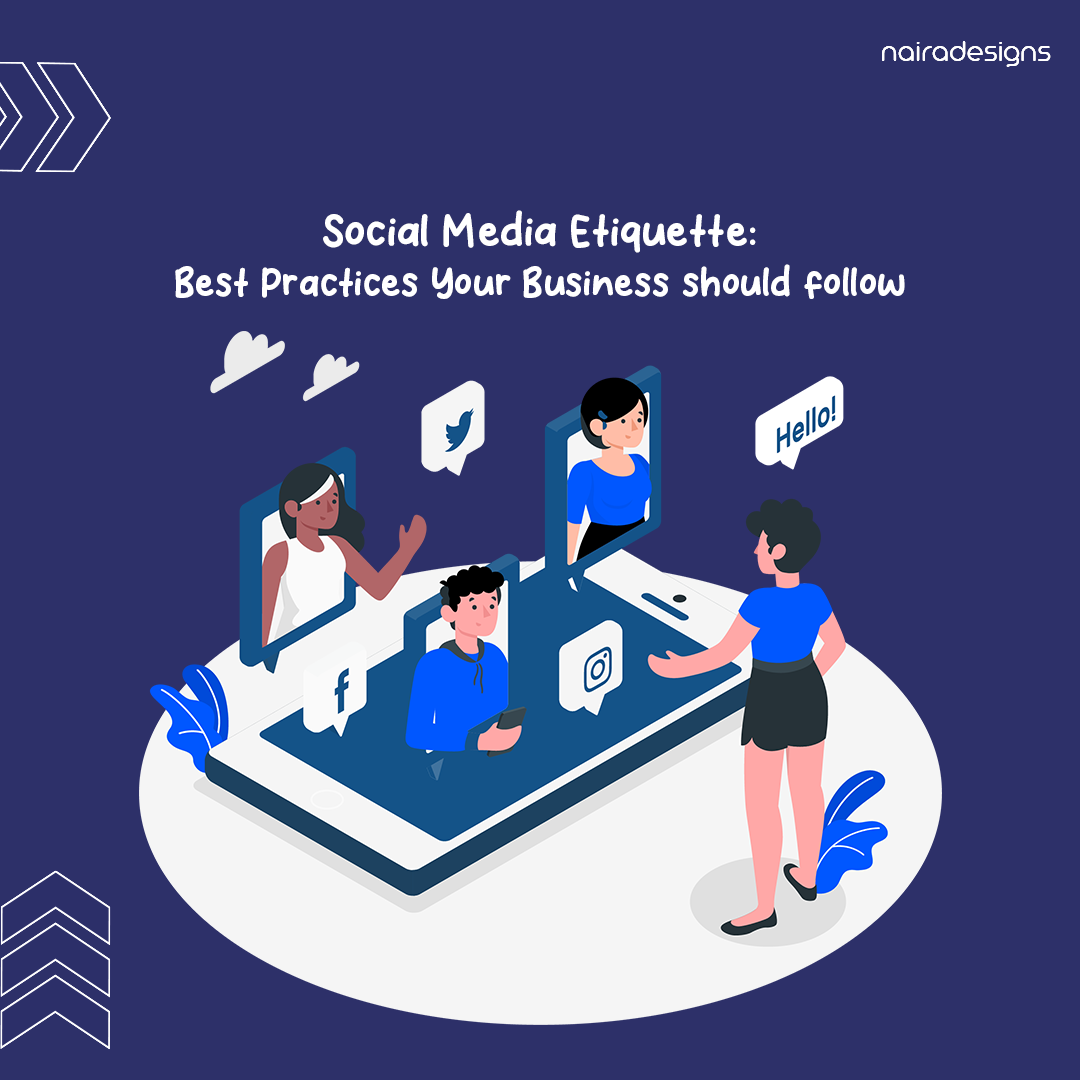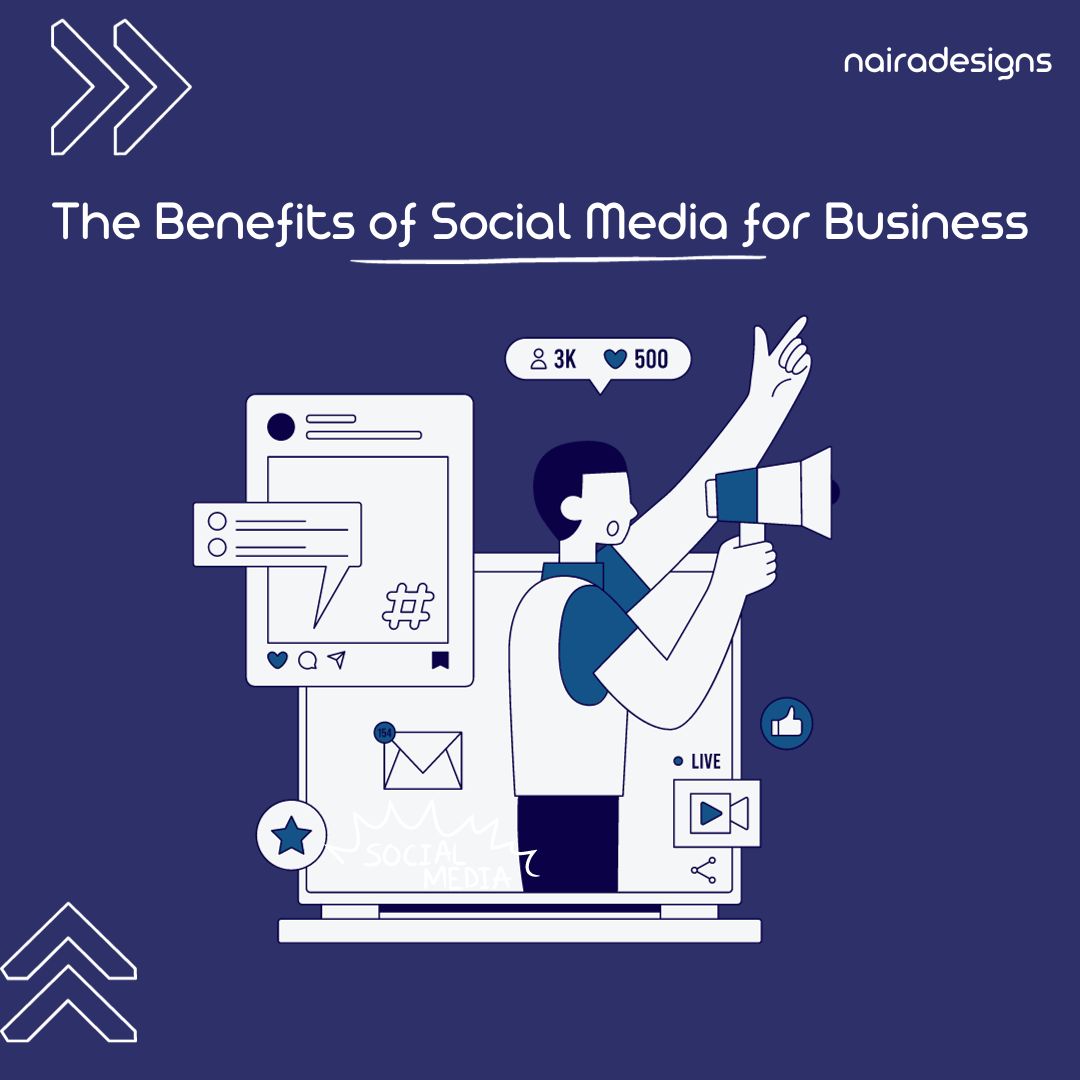
Are you just getting started with a social media strategy for your business? Want to know the basic etiquette you should follow before getting started?
We share 10 social media best practices in this infographic.
Here’s a quick summary:
- Understand each platform’s best practices
- Don’t be overly promotional
- Monitor posts frequently
- Maintain hashtag “hygiene”
- Be responsive; not reactive
- Don’t force a connection
- Don’t beg for (or buy) followers
- Remember humour isn’t universal
- Play nice with competitors
- Give credit to sources
Check out the infographic for more detail.
In today’s digital age, social media has become an integral part of businesses’ marketing strategies. It’s a powerful tool for connecting with customers, building brand awareness, and driving sales.
However, navigating the social media landscape requires more than just creating an account and posting content. To truly succeed on social media, businesses need to follow certain etiquette and best practices.
In this blog post, we will explore five essential social media etiquette guidelines that your business should follow to thrive in the online world.
Understand Each Platform’s Best Practices
One of the first steps in mastering social media etiquette for your business is understanding the unique characteristics and best practices of each platform you’re using. Not all social media platforms are created equal, and what works on one may not work on another.
- Facebook: Facebook is a versatile platform known for its diverse user base. Best practices include sharing a mix of content types, engaging with comments and messages promptly, and using Facebook Analytics to track performance.
- Twitter: Twitter is fast-paced and concise. To excel here, businesses should post frequently, use relevant hashtags, and engage in real-time conversations. Retweeting and liking user-generated content can also help foster a sense of community.
- Instagram: Visual content reigns supreme on Instagram. High-quality images and videos are essential. Stories and reels are great for increasing engagement. Make sure to use relevant hashtags, and consider partnering with influencers or running paid promotions.
- LinkedIn: LinkedIn is a professional networking platform. Share industry insights, company updates, and connect with other professionals. Engage in meaningful discussions and showcase your expertise by publishing articles or thought leadership content.
- Pinterest: Pinterest is all about inspiration and visual discovery. Create eye-catching pins, use keywords in pin descriptions, and organize your boards strategically. Collaborate with other users by repinning and commenting.
- YouTube: If your business uses YouTube, create informative and engaging video content. Optimize video titles, descriptions, and tags for searchability. Consistency is key, so establish a regular upload schedule.
Each platform has its own culture and user expectations. By understanding and adhering to these best practices, you’ll be better equipped to tailor your content and engagement strategies to each platform, maximizing your success.
Don’t Be Overly Promotional
While the primary goal of your business’s social media presence may be to promote your products or services, it’s crucial not to be overly promotional. Social media users are inundated with advertising messages, and overly promotional content can be a major turn-off. Instead, focus on providing value to your audience.
Here are some tips for striking the right balance:
- Educate and Inform: Share informative and educational content related to your industry. Position your business as a trusted source of knowledge. This can include how-to guides, tips and tricks, and industry insights.
- Entertain and Engage: Use humor, storytelling, and creative content to entertain your audience. Engage with your followers by asking questions, running polls, or sharing relatable stories.
- Showcase Customer Stories: Highlight customer success stories and testimonials. User-generated content can be highly effective in building trust and credibility.
- Behind-the-Scenes Content: Give your audience a glimpse behind the scenes of your business. Show the human side of your brand by introducing your team, sharing your company’s values, and showcasing your company culture.
- Promotions and Sales: While it’s important not to overdo it, occasional promotions and sales announcements are acceptable. Just be sure to offer something of value to your followers, such as discounts or exclusive offers.
Remember, social media is about building relationships and fostering a sense of community. By providing value and engaging with your audience in a meaningful way, you’ll be more likely to gain their trust and loyalty.
Monitor Posts Frequently
Social media is a dynamic and real-time platform. To maintain a positive online presence, it’s essential to monitor your posts and engagement frequently. Here’s why this is important:
- Respond to Comments and Messages: When users leave comments on your posts or send you messages, it’s crucial to respond promptly. This shows that you value their input and are attentive to their needs. Ignoring or delaying responses can damage your brand’s reputation.
- Manage Negative Feedback: Not all comments and feedback will be positive. When you encounter negative comments or reviews, address them professionally and constructively. Offering solutions and demonstrating a commitment to customer satisfaction can turn a negative situation into a positive one.
- Stay Informed: Social media trends and conversations can change rapidly. By monitoring your accounts frequently, you can stay informed about what’s happening in your industry and among your target audience. This allows you to adapt your content and engagement strategies accordingly.
- Prevent and Address Issues: Timely monitoring can help you identify and address issues before they escalate. Whether it’s a technical problem, a customer complaint, or a misunderstanding, being aware of issues early on allows you to take corrective action.
- Engage in Real-Time: Some social media platforms, like Twitter, thrive on real-time engagement. By monitoring your account regularly, you can participate in trending conversations and capitalize on opportunities to connect with a broader audience.
Utilize social media management tools and notifications to stay on top of your accounts. Assign responsibilities within your team to ensure that someone is always available to respond to comments and messages promptly.
Effective monitoring not only helps you maintain a positive online presence but also strengthens your relationships with your audience.
Maintain Hashtag “Hygiene”
Hashtags play a significant role in social media engagement and discoverability. They help users find content relevant to their interests, and they can expand the reach of your posts. However, using hashtags indiscriminately or inappropriately can have the opposite effect. Here are some tips for maintaining hashtag “hygiene”:
- Relevance is Key: Use hashtags that are relevant to your content and audience. Avoid using popular or trending hashtags if they don’t relate to your post, as this can come across as spammy.
- Don’t Overdo It: While some platforms allow for multiple hashtags, it’s best to use them sparingly. On platforms like Twitter, 1-2 relevant hashtags are usually sufficient. On Instagram, you can use more, but don’t go overboard.
- Create Your Own: Consider creating custom-branded hashtags that are unique to your business or campaigns. Encourage your followers to use these hashtags when sharing content related to your brand.
- Research Hashtags: Before using a hashtag, research it to ensure it’s not associated with anything negative or controversial. Some hashtags may have double meanings or be connected to unrelated discussions.
- Track Hashtag Performance: Use social media analytics tools to track the performance of your hashtags. This can help you determine which ones are driving engagement and which ones are less effective.
- Stay Informed: Stay updated on trending hashtags and topics within your industry. Joining relevant conversations can help increase your visibility and connect with a broader audience.
Maintaining proper hashtag “hygiene” is essential for making your content discoverable and ensuring that you’re reaching the right audience. Thoughtful hashtag use can boost your engagement and help your posts stand out.
Be Responsive; Not Reactive
In the fast-paced world of social media, it’s easy to react quickly to comments, trends, or events. However, being reactive without considering the consequences can lead to missteps and damage your brand’s reputation. Instead, aim to be responsive, which means taking a thoughtful and strategic approach to your interactions on social media.
Here’s how to be responsive rather than reactive:
- Plan Your Responses: Before responding to comments or engaging in discussions, take a moment to plan your response. Consider how your words and actions align with your brand’s values and messaging.
- Stay Calm and Professional: In the face of negative comments or criticism, maintain a calm and professional demeanor. Avoid engaging in heated arguments or confrontations, as this can escalate the situation.
- Acknowledge Mistakes: If your business makes a mistake, acknowledge it and take responsibility. Offer a sincere apology and, if applicable, outline the steps you’re taking to rectify the situation.
- Use Data to Inform Responses: Base your responses on data and insights whenever possible. Analyze customer feedback, comments, and trends to make informed decisions about how to engage with your audience.
- Set Guidelines for Responses: Establish guidelines for responding to different types of comments or inquiries. This ensures consistency in your brand’s messaging and interactions.
- Empower Your Team: If you have a team managing your social media accounts, empower them to make decisions within the established guidelines. Provide training and resources to help them handle various situations effectively.
- Learn from Feedback: Pay attention to feedback from your audience and adapt your social media strategy accordingly. Continuous improvement is key to building a positive online reputation.
By being responsive and strategic in your social media interactions, you can maintain a positive brand image and build trust with your audience. Thoughtful responses demonstrate your commitment to customer satisfaction and your ability to handle various situations gracefully.
Don’t Force a Connection
Building genuine connections on social media is essential for long-term success. However, it’s crucial not to force connections with individuals or other businesses. Authenticity is key, and pushing too hard can have a negative impact. Here’s how to navigate this aspect of social media etiquette:
- Authentic Engagement: Engage with others genuinely and meaningfully. When commenting or reaching out, do so because you have a legitimate interest in their content or because you believe there’s a mutual benefit to the connection.
- Avoid Spammy Tactics: Steer clear of spammy practices like sending unsolicited direct messages with sales pitches or excessively tagging others in your posts. These tactics can be annoying and counterproductive.
- Build Relationships Over Time: Building relationships on social media takes time. Focus on building a reputation as a valuable and trustworthy member of the community. Over time, you’ll naturally connect with others who share your interests or goals.
- Respect Boundaries: Be mindful of others’ boundaries and privacy. Don’t pressure people to connect or share personal information if they’re not comfortable doing so.
- Quality Over Quantity: It’s not about the number of connections you have but the quality of those connections. Building a network of engaged and like-minded individuals is more valuable than amassing a large but uninterested following.
Remember that authenticity and respect go a long way in building meaningful connections on social media.
Don’t Beg for (or Buy) Followers
The temptation to boost your follower count on social media can be strong, but begging for followers or buying them is not a sustainable or ethical approach. Instead, focus on organic growth through valuable content and engagement. Here’s why this is important:
- Quality Over Quantity: Having a large number of followers means little if they’re not genuinely interested in your content or products. It’s better to have a smaller, engaged audience that interacts with your posts.
- Begging for Followers: Pleading for followers in your posts can come across as desperate and unprofessional. It’s unlikely to attract the type of followers you want.
- Buying Followers: Purchasing followers might give the appearance of a larger following, but these followers are often fake or unengaged. Social media algorithms prioritize engagement, so a high follower count with low interaction can harm your visibility.
- Focus on Content Quality: Instead of seeking followers, focus on creating high-quality, valuable content that resonates with your target audience. Quality content will naturally attract followers who are genuinely interested in what you have to offer.
- Engagement Matters: Engagement, such as likes, comments, and shares, is a better indicator of success than follower count. Engaged followers are more likely to become customers and brand advocates.
- Authentic Growth: Building a genuine following takes time, but it’s worth it. Authentic growth leads to a community of supporters who are invested in your brand.
Remember that building a real and engaged following on social media is a marathon, not a sprint. It may take time, but the results will be more rewarding and sustainable.
Remember Humor Isn’t Universal
Using humor on social media can be a powerful way to connect with your audience and make your content more engaging. However, it’s essential to remember that humor isn’t universal. What’s funny to one person or culture may not be to another. Here’s how to approach humor with sensitivity:
- Cultural Awareness: Be aware of cultural differences and sensitivities when using humor. Avoid humor that could be offensive or inappropriate in certain cultures or communities.
- Avoid Controversial Topics: Steer clear of humor related to controversial topics such as politics, religion, or sensitive social issues. These subjects can easily alienate or offend your audience.
- Test the Waters: If you’re unsure whether a joke or humorous content is appropriate, consider testing it with a smaller audience or a trusted group of individuals to gauge their reactions.
- Self-Deprecating Humor: Self-deprecating humor can be a safer option, as it involves making fun of oneself rather than others. However, even this should be used judiciously.
- Stay Consistent with Brand Voice: Ensure that your humor aligns with your brand’s overall voice and personality. Consistency in tone is essential for maintaining a cohesive brand image.
- Monitor Responses: Pay attention to how your audience responds to your humor. If you receive negative feedback or backlash, be prepared to address it professionally.
While humor can be a valuable tool for engagement, it’s essential to approach it with cultural sensitivity and awareness of potential pitfalls.
Play Nice with Competitors
In the competitive landscape of social media, it’s essential to maintain professionalism and respect when interacting with competitors. Rather than viewing competitors as adversaries, consider them as potential allies or sources of inspiration. Here’s how to play nice with competitors:
- Acknowledge Competitors: Recognize the presence and achievements of your competitors without resorting to negative comments or criticism.
- Engage Positively: If you encounter your competitors’ content, engage with it positively when appropriate. Liking, sharing, or leaving thoughtful comments can create goodwill.
- Learn from Competitors: Analyze your competitors’ social media strategies to identify what’s working for them. This can provide insights into trends, content ideas, or potential areas for improvement.
- Collaborate When Possible: Consider collaborations or partnerships with competitors if there are opportunities for mutual benefit. Collaborations can expand your reach and offer unique value to your audience.
- Avoid Negative Tactics: Refrain from engaging in negative tactics such as smear campaigns or spreading false information about competitors. These actions can damage your reputation.
- Focus on Your Unique Value: Emphasize what makes your business unique and why customers should choose you. Competing based on value and differentiation is often more effective than negative tactics.
Remember that healthy competition can drive innovation and growth. Maintaining a positive and professional relationship with competitors can benefit both your brand and the industry as a whole.
Give Credit to Sources
In the age of content sharing, giving credit to sources is a fundamental aspect of social media etiquette. Whether you’re sharing someone else’s content, using a quote, or referencing external sources, proper attribution is essential. Here’s how to ensure you give credit where it’s due:
- Cite Original Authors: When sharing articles, images, or content created by others, provide clear attribution to the original authors or creators. This includes mentioning their names and, if applicable, linking to their profiles or websites.
- Use Quotation Marks: When quoting someone else’s words or ideas, use quotation marks and mention the source. This demonstrates respect for intellectual property.
- Tag or Mention: If you’re sharing content from another social media account, tag or mention the account owner in your post to acknowledge their contribution.
- Verify Information: Before sharing news or information, verify its accuracy from credible sources. Misinformation can spread quickly on social media, so it’s essential to be responsible with your content.
- Ask for Permission: If you plan to use someone’s content in a commercial or promotional context, ask for their permission first. Respect their wishes if they decline.
- Give Credit for Inspiration: If someone or something inspired your content, acknowledge it. It’s a courteous way to show appreciation and build positive relationships.
Properly crediting sources not only upholds ethical standards but also helps you build trust with your audience. It demonstrates that you value and respect the work of others, which can enhance your credibility on social media.
Conclusion
Social media etiquette is a vital aspect of a successful online presence for businesses. Understanding each platform’s best practices, avoiding excessive self-promotion, monitoring posts frequently, maintaining hashtag “hygiene,” and being responsive rather than reactive are key principles that can help your business thrive in the dynamic world of social media.
Remember that social media is a two-way communication channel. Building and nurturing relationships with your audience should be at the core of your social media strategy. By following these best practices, you can create a positive and engaging online presence that fosters trust, loyalty, and long-term success for your business.

![Social Media Etiquette: 10 Best Practices Your Business Should Follow [Infographic]](https://blog.red-website-design.co.uk/wp-content/uploads/Social-Media-Etiquette-10-Best-Practices-Your-Business-Should-Follow.jpg)



